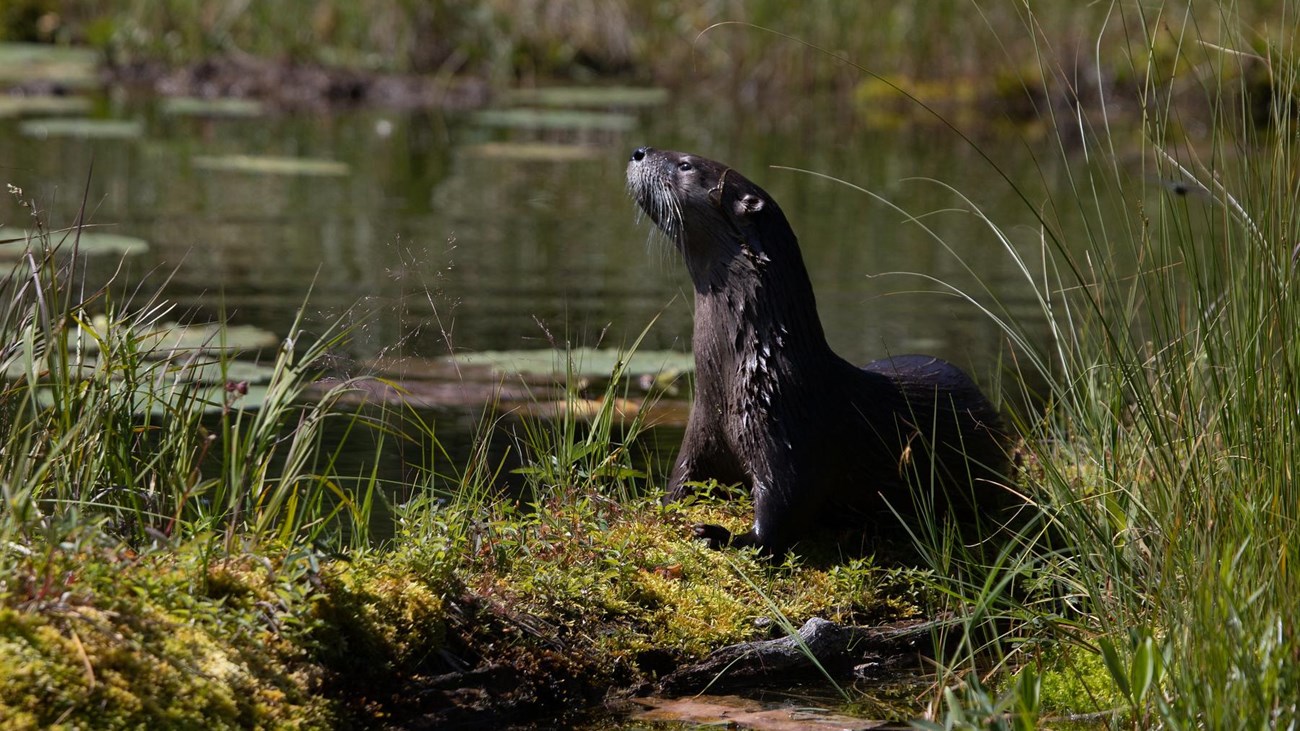Last updated: July 17, 2024
Thing to Do
Northern River Otters

NPS photo
Lontra canadensis
The northern river otter is the most aquatic member of the weasel family. They can swim underwater up to 6 miles per hour (9.6 kph) for two to three minutes at a time. They aren't as agile or fast on land unless they find snow or ice, where they can move rapidly by alternating hops and slides reaching speeds of 15 miles per hour (24 kph).
The northern river otter is the most aquatic member of the weasel family. They can swim underwater up to 6 miles per hour (9.6 kph) for two to three minutes at a time. They aren't as agile or fast on land unless they find snow or ice, where they can move rapidly by alternating hops and slides reaching speeds of 15 miles per hour (24 kph).
Details
Activity
Wildlife Watching
Pets Allowed
No
Activity Fee
No
Entrance fees may apply, see Fees & Passes information.
Location
In or near water
Rarely seen by anyone but the luckiest of visitors, northern river otters are spotted on the park’s larger lakes and streams.
Reservations
No
Season
Year Round
Time of Day
Day, Dawn, Dusk
Accessibility Information
In addition to driving the Going-to-the-Sun Road and other park roads, the Running Eagle Falls Nature Trail, the Swiftcurrent Nature Trail, and the Trail of the Cedars are three of Glacier’s most accessible areas.
Improvements in accessibility are being made each year, and with a bit of pre-planning, all visitors can find Glacier to be a rewarding experience. Details on Glacier's accessible facilities and services can be found on the park's website nps.gov/glac/planyourvisit/accessibility.htm.
Improvements in accessibility are being made each year, and with a bit of pre-planning, all visitors can find Glacier to be a rewarding experience. Details on Glacier's accessible facilities and services can be found on the park's website nps.gov/glac/planyourvisit/accessibility.htm.
